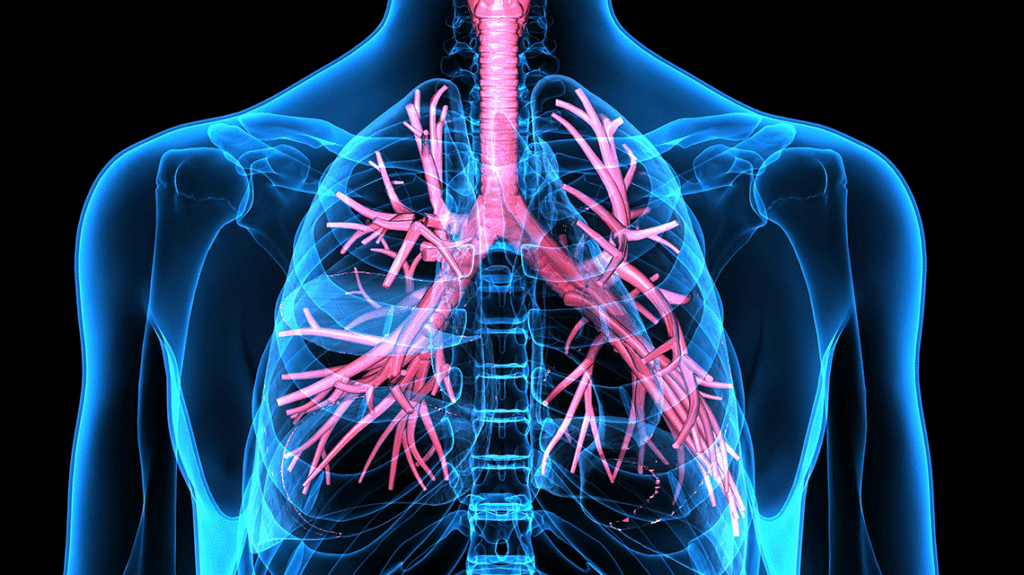The Impact and Implications of Interferons Against RSV
The Impact and Implications of Interferons Against RSV https://pediatricsnationwide.org/wp-content/uploads/2021/02/AdobeStock_126797930_lung-header-1024x575.gif 1024 575 Emily Siebenmorgen Emily Siebenmorgen https://pediatricsnationwide.org/wp-content/uploads/2023/05/Emily.Siebenmorgen-scaled-e1684876333147.jpg- November 07, 2022
- Emily Siebenmorgen

Specific cytokines play a key role in minimizing disease severity
Respiratory syncytial virus (RSV) shares many symptoms with other respiratory viruses like the common cold or the flu, but it represents the number one cause of hospitalization in infants worldwide. Despite being a large burden on the health care system, there are currently few preventative strategies for the disease – and even fewer ways for clinicians to predict which cases will require hospitalization and critical care.
To better understand the markers of disease severity, researchers at Nationwide Children’s collected nasopharyngeal swabs from over 200 infants with RSV in both inpatient and outpatient settings. The team analyzed the infants’ viral loads and the quantity of their mucosal cytokines, with a special interest in their type III interferons, also known as lambda interferons.
“In a nutshell, mucosal interferons are relevant for respiratory infections because of their potent and specific antiviral effects,” says Asuncion Mejias, MD, PhD, principal investigator in the Center for Vaccines and Immunity at Nationwide Children’s Hospital. “Type III interferons have been discovered more recently and are produced at the mucosal level. So, while they have an antiviral effect in the respiratory epithelium, they are associated with less collateral damage – like fevers – than type I interferons.”
Of the 13 cytokines the researchers measured, they found that concentrations of type I, II, and III interferons and the interferon-related cytokine CXCL10 were significantly higher in infants with RSV infection over six months of age. Additionally, the concentrations of these cytokines were significantly higher in outpatients with mild RSV infection than in children hospitalized with severe RSV disease.
“All of this suggests that the age of the child plays a critical role in the innate immune cytokine response to RSV in the mucosa, and that interferons are a big part of that response,” says Octavio Ramilo, MD, chief of the Division of Infectious Diseases at Nationwide Children’s Hospital and co-author of the study.
There are two notable benefits to understanding the role mucosal interferons in regulating RSV disease severity. First, our understanding of mucosal markers can help develop a rapid nasal test for clinicians evaluating infants with RSV.
“In a clinical setting, it’s impossible to predict which patients with RSV infection will require intensive care and which ones can be discharged home safely,” Dr. Ramilo says. “This would be a minimally-invasive way to identify severe cases up front and triage them.”
Second, based on these data, there is an opportunity to develop a mucosal vaccine that mirrors the response elicited by infants with mild RSV infection and protects against severe infection. Dr. Mejias is working with Dr. Ramilo, Mark Peeples, MD, principal investigator in the Center for Vaccines and Immunity at Nationwide Children’s, and collaborators The Ohio State University to develop such a vaccine.
“Mucosal live attenuated vaccines will be an excellent option for infants with a more mature immune response, which occurs around 6 months of age,” Dr. Peeples explains.
Published in The Journal of Infectious Diseases, this is one of the first studies to investigate the role of lambda interferons in RSV disease severity in infants and the influence of age on the maturation of mucosal interferons.
Dr. Mejias emphasizes the need for researchers to understand the dynamics of mucosal interferons and their role in the optimal development of adaptive immune responses against RSV infection in children.
Reference:
Taveras J, Garcia-Maurino C, Moore-Clingenpeel M, Xu Z, Mertz S, Ye F, Chen P, Cohen SH, Cohen D, Peeples ME, Ramilo O, Mejias A. Type-III Interferons, Viral Loads, Age, and Disease Severity in Young Children with Respiratory Syncytial Virus Infection. The Journal of Infectious Diseases. 2022 Oct 6;jiac404. doi: 10.1016/j.jpeds.2022.03.033.
About the author
Emily Siebenmorgen is a Science Communication Specialist at Nationwide Children's Hospital with a passion for making research findings accessible. From her time writing at Battelle and AWRI's Center for Injury Research and Policy, she has experience distilling complex topics into simple takeaways for both professional and consumer audiences. Emily earned her BS in Psychology and BA in Strategic Communication from The Ohio State University.
-
Emily Siebenmorgenhttps://pediatricsnationwide.org/author/emily-siebenmorgen/
-
Emily Siebenmorgenhttps://pediatricsnationwide.org/author/emily-siebenmorgen/
-
Emily Siebenmorgenhttps://pediatricsnationwide.org/author/emily-siebenmorgen/September 29, 2022
-
Emily Siebenmorgenhttps://pediatricsnationwide.org/author/emily-siebenmorgen/October 17, 2022
- Posted In:
- Research
- Uncategorized










